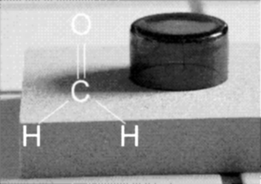Validation of a passive flux sampler for on-site measurement of formaldehyde emission rates from building and furnishing materials
Abstract
A diffusive sampling device was developed for screening indoor sources of

* Corresponding authors
a Université Lille Nord de France, Lille, France
b
Ecole des Mines de Douai, Département Chimie et Environnement, 941 rue Charles Bourseul, BP 10838, Douai cedex, France
E-mail:
herve.plaisance@mines-douai.fr
A diffusive sampling device was developed for screening indoor sources of

 Please wait while we load your content...
Something went wrong. Try again?
Please wait while we load your content...
Something went wrong. Try again?
A. Blondel and H. Plaisance, Anal. Methods, 2010, 2, 2032 DOI: 10.1039/C0AY00416B
To request permission to reproduce material from this article, please go to the Copyright Clearance Center request page.
If you are an author contributing to an RSC publication, you do not need to request permission provided correct acknowledgement is given.
If you are the author of this article, you do not need to request permission to reproduce figures and diagrams provided correct acknowledgement is given. If you want to reproduce the whole article in a third-party publication (excluding your thesis/dissertation for which permission is not required) please go to the Copyright Clearance Center request page.
Read more about how to correctly acknowledge RSC content.
 Fetching data from CrossRef.
Fetching data from CrossRef.
This may take some time to load.
Loading related content
